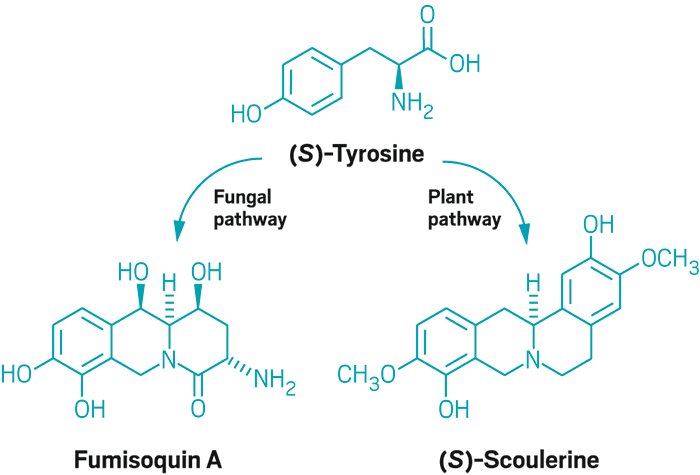Advertisement
Grab your lab coat. Let's get started
Welcome!
Welcome!
Create an account below to get 6 C&EN articles per month, receive newsletters and more - all free.
It seems this is your first time logging in online. Please enter the following information to continue.
As an ACS member you automatically get access to this site. All we need is few more details to create your reading experience.
Not you? Sign in with a different account.
Not you? Sign in with a different account.
ERROR 1
ERROR 1
ERROR 2
ERROR 2
ERROR 2
ERROR 2
ERROR 2
Password and Confirm password must match.
If you have an ACS member number, please enter it here so we can link this account to your membership. (optional)
ERROR 2
ACS values your privacy. By submitting your information, you are gaining access to C&EN and subscribing to our weekly newsletter. We use the information you provide to make your reading experience better, and we will never sell your data to third party members.
Synthesis
More Clues To Biotoxin Assembly
August 4, 2008
| A version of this story appeared in
Volume 86, Issue 31
A newly discovered natural product is providing additional hints about how algae construct deadly toxins (Org. Lett., DOI: 10.1021/ol801243n). Ladder polyethers, named for their runglike structures, are toxins found in ecologically devastating algal blooms called red tides. In 1985, Columbia University's Koji Nakanishi suggested that the polyethers could arise from a cascade of epoxide-opening reactions, but it's still not clear how the ladders' fused ether rings are assembled. Now, a team led by Jeffrey L. C. Wright of the Center for Marine Science at the University of North Carolina, Wilmington, has detected trace amounts of brevisamide, a compound featuring just a single ether ring, in algae extracts. Brevisamide's structure, Wright says, supports the notion that an epoxide-opening pathway generates the ether ring. The structure also indicates the direction in which biosynthetic proteins assemble the carbon skeleton. Compared with other types of natural products, researchers know little about how these toxins are made, so "each new clue strongly influences our evolving hypothesis," says Timothy F. Jamison of MIT, who also explores ladder polyether biosynthesis.




Join the conversation
Contact the reporter
Submit a Letter to the Editor for publication
Engage with us on Twitter